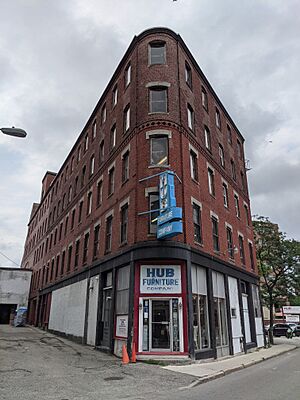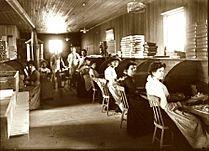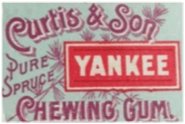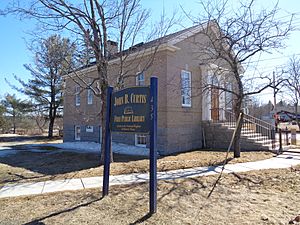John B. Curtis facts for kids
Quick facts for kids
John Bacon Curtis
|
|
|---|---|
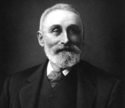 |
|
| Born | October 10, 1827 |
| Died | June 13, 1897 (aged 69) |
| Resting place | Portland, Maine |
| Occupation | businessman |
| Known for | invented chewing gum |
| Signature | |
 |
|
John Bacon Curtis (born October 10, 1827 – died June 13, 1897) was a smart businessman from Maine, USA. He is famous for inventing chewing gum as we know it. He was also the first person to sell chewing gum made from natural stuff and added flavors.
John got the idea for gum when he saw loggers (people who cut down trees) chewing on spruce tree resin. He started by selling this spruce gum. A few years later, he switched to a flavored paraffin wax gum, which became much more popular. He built a big factory in Maine that had about 200 workers. They made many different kinds of chewing gum.
Because his gum business was so successful, he also started farming on a huge scale. He owned more than 10,000 acres (4,000 ha) of land. John Curtis became very rich. When he passed away at age 69 in 1897, he was worth a lot of money, about $17.2 million in today's money.
Contents
John Curtis's Early Life
John Curtis was born in Hampden, Maine, on October 10, 1827. His parents were John and Mary Curtis. He had two siblings, Charles H. and Mary E. Curtis.
As a kid, John went to schools called normal schools. But he didn't finish school. Instead, he started working as a teenager to help his family earn money. He worked on farms and as a "swamper." A swamper's job was to clear paths through forests. They would remove small trees and fallen logs to get roads ready for building.
At first, John earned just $5 a month. This was like getting equivalent to $157 in 2022 today. Later, his pay went up to $16 a month, and then even to $24 a month.
Building a Chewing Gum Business
While working in the woods, John Curtis noticed that loggers liked to chew on spruce tree resin. He thought, "Hey, maybe I could sell this!" So, he started collecting the sticky spruce resin.
He would boil the resin, skim off the top, pour it out, and let it cool. Then, he'd roll it flat, cut it into small pieces, dust them with cornstarch, and wrap each piece. In 1848, John sold two of these pieces for just one penny. This was the start of his chewing gum business.
His family had moved to Bangor, Maine. They cooked their first batch of gum on a Franklin stove in their home. They called their gum "State of Maine Pure Spruce Gum." Their new company was named Curtis & Son.
John took his first batch of gum to Portland, Maine, which was about 130 miles (210 km) away. He visited many stores for three days before he finally sold his gum to one shop. In 1848 and 1849, his plain spruce gum didn't sell very well.
Then, in 1850, John became a traveling salesman. He used a sales wagon and traveled all over the New England states. He started selling flavored paraffin gum, which was much more popular than the spruce gum.
John was very determined. He would often travel late into the night to reach the next town before his competitors. This way, he could be the first to offer his products to the stores there. He earned $6,000 in 1850, which was a lot of money back then. This was the very first time chewing gum was made and sold on a large scale.
Eventually, John didn't just sell to stores. He became a "commercial sales traveler." This meant he traveled to places far away, like Pennsylvania, Ohio, Minnesota, and Missouri. He traveled on canals and rivers, like the Erie Canal and the Mississippi River. He would even let stores pay him later, sometimes up to a year later. He was one of the first people to act as a sales representative for an Eastern business in the United States.
While John traveled to sell the gum, his father managed the gum-making process. His father's workers would collect the gum from spruce trees. After gathering enough raw gum, they brought it to the factory in Bangor to be processed.
The business grew quickly. Their first small processing area became too small. So, they moved their chewing gum business to a much bigger factory in Portland, Maine. At first, they only needed a few pounds of raw material. But later, they bought as much as ten tons of spruce gum at a time! This was a very big and risky purchase. In the mid-1860s, John Curtis once bought $35,000 worth of raw gum material. This was probably the biggest deal in the gum business during that time.
In 1852, Curtis & Son expanded their factory. It was 51 feet (16 m) wide, 145 feet (44 m) long, and three stories tall. They hired 200 people who made 1,800 boxes of chewing gum every day. John Curtis even invented most of the machines used to make the gum. He never got patents for his inventions. Instead, the company kept their gum-making process a secret.
Some of the spruce gums made by Curtis & Son had fun names like "American Flag," "Yankee Pure Spruce," "White Mountain," "Licorice Lulu," and "Biggest and Best."
John Curtis's Other Businesses
John Curtis was not just a gum inventor. In 1872, he started a dredging business. This involved digging up mud and sand from the bottom of rivers or harbors. He worked on big projects that were worth from $50,000 to $500,000. He was successful in this business too.
Later, he opened a shipyard and built ten large ships. He also owned most of the ferry service between Portland and South Portland, Maine. He even owned a line of steamships until 1896. John Curtis was also involved in silver and coal mining in Maine.
In 1880, John Curtis started farming on a very large scale near Gothenburg, Nebraska. He owned over 10,000 acres (40 km2) of land there. He raised 3,500 Hereford cattle and 1,200 hogs. In one year, he harvested huge amounts of crops, including 75,000 bushels of corn and 12,000 bushels of wheat.
John Curtis's Family and Legacy
John Curtis married Alice Charlotte Bacon on August 13, 1878. That same year, he bought the biggest and most expensive house in Deering Center, Maine. In the last months of his life, he became very interested in ancient Egypt and its pyramids. His motto was "do good."
John Curtis passed away at his home on June 13, 1897. In his will, he left his large fortune to be invested. The money's income would go to his wife. After she passed away, the rest of his money went to family members and several public places. He gave $20,000 to the town of Bradford to build a library. He wanted it to be a free public library to help people learn.
The library is named the John B. Curtis Free Public Library in his honor. It is also listed on the National Register of Historic Places, which means it's an important historical site. The library building, made of brick and granite, was officially opened on March 15, 1915.


